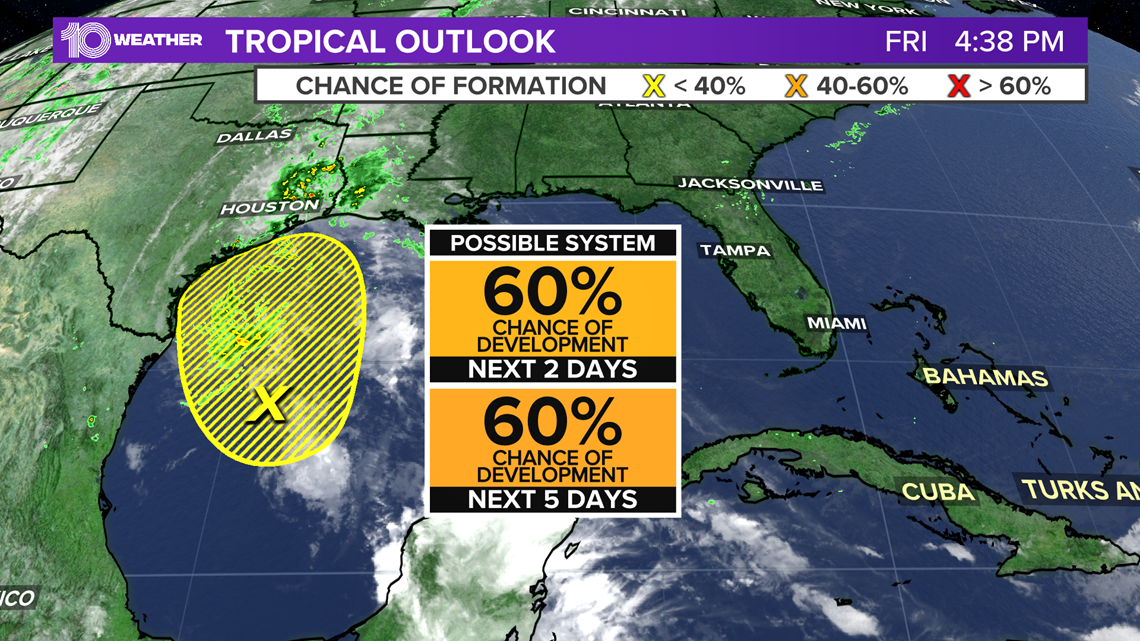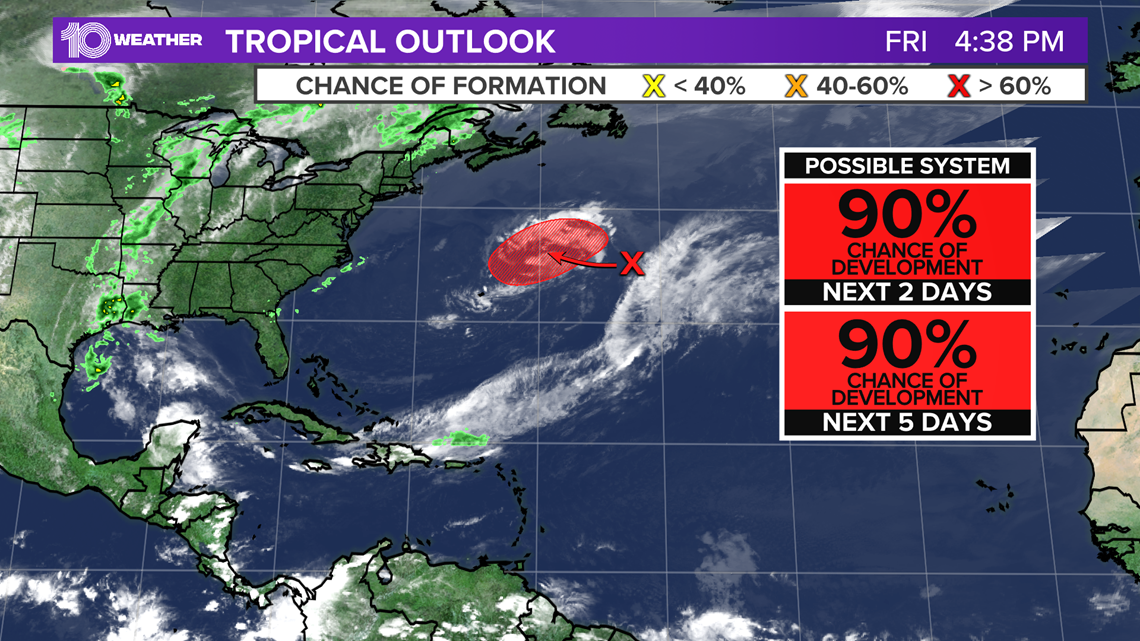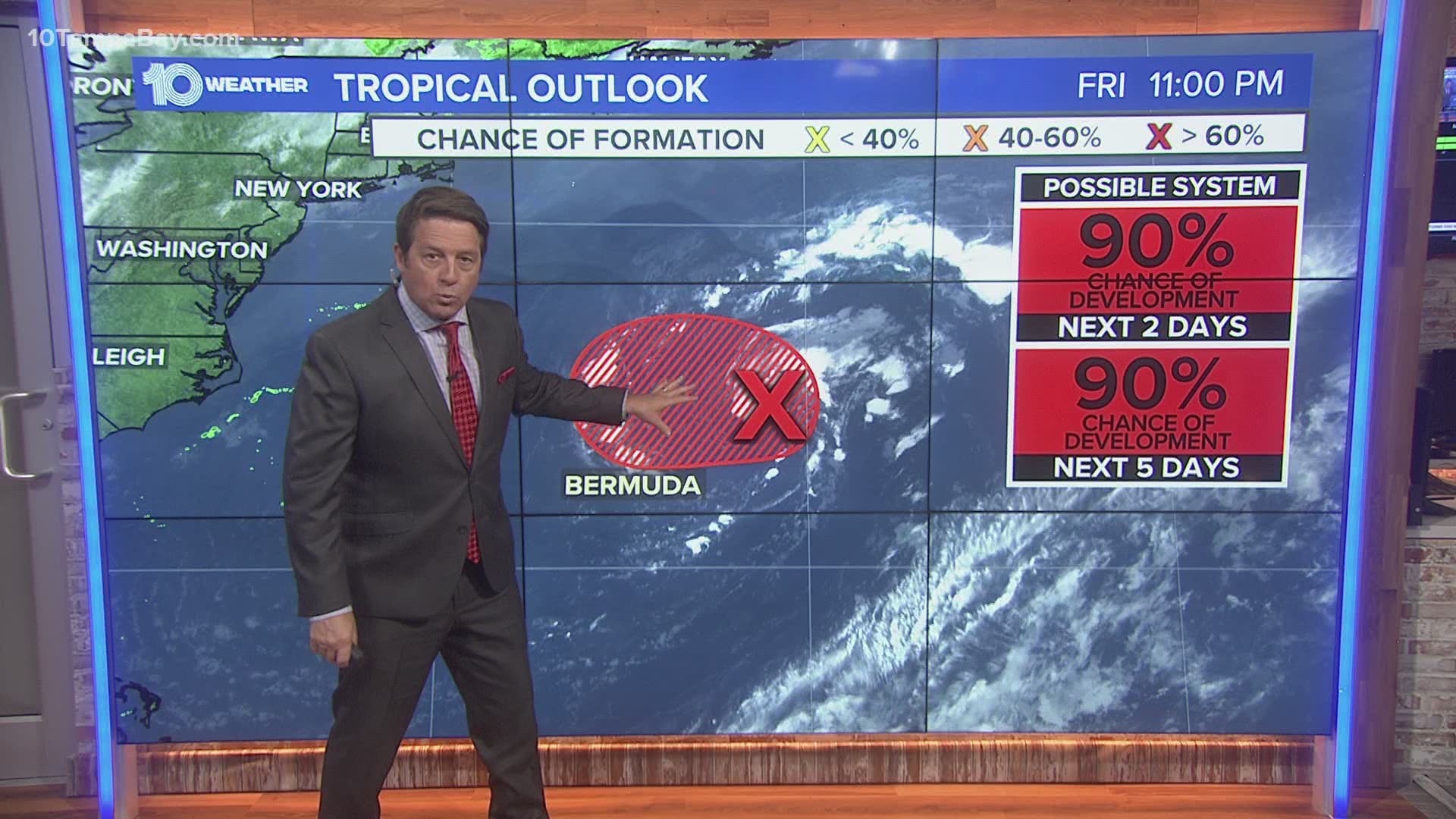TAMPA, Fla. — The official start to the 2021 Atlantic hurricane season is still more than a week away but that doesn't mean there can't be some tropical activity beforehand.
The National Hurricane Center is monitoring two disturbances that have the potential to develop into named systems. The first two names of the 2021 hurricane season are Ana and Bill.
A disturbance in the Gulf of Mexico has a medium, 60% chance of development over the next two days, and the next five days. It could become a little more organized before reaching the Texas coast.


Then, there is another disturbance near Bermuda. The National Hurricane Center says this one could develop subtropical characteristics sometime on Friday It has a 90% chance of development over the next 48 hours and over the next five days.
The NHC says it is forecast to move over more unfavorable conditions late Saturday or Sunday and will not be a long-lived storm if it does develop.


On Thursday, the National Oceanic and Atmospheric Administration released its outlook for the 2021 Atlantic hurricane season.
NOAA forecasters predict a 60% chance for an “above-normal” hurricane season and a 30% chance for a near-normal season. The forecast calls for 13-20 named storms with 3-5 of them being major hurricanes and 6-10 hurricanes.
A normal season typically brings 14 named storms, seven hurricanes and three major hurricanes.
That's up from the previous Atlantic storm averages, based on the period from 1981 to 2010, which were 12 named storms and six hurricanes.
NOAA updated those averages this year. The new average comes as NOAA’s Climate Prediction Center moves on to using 1991-2020 as the new 30-year period of record instead of 1981 to 2010.
The National Hurricane Center determines a storm's danger potential by assigning a category to the storm between 1 and 5, based on the Saffir-Simpson Hurricane Wind Scale, which estimates potential property damage based on the storm's sustained wind speed.
Hurricanes above a Category 3 are considered major hurricanes because of their potential for devastating damage, according to the NHC.
Keep in mind, the category assigned to a storm does not take into account potential damage that could be brought on by storm surge or flooding.
Routine outlooks at the National Hurricane Center began May 15th, which is new this year.
After six straight years of Atlantic tropical cyclones forming before the June 1 start of hurricane season, the National Weather Service gave the OK to begin issuing routine tropical weather outlooks in mid-May. They will now be issued daily moving forward through the end of November, at 2 a.m., 8 a.m., 2 p.m. and 8 p.m.
Peak hurricane season runs from August through early October when the ocean waters are typically at their warmest.
Learn more about preparing for hurricane season at the 10 Tampa Bay Hurricane Headquarters.

